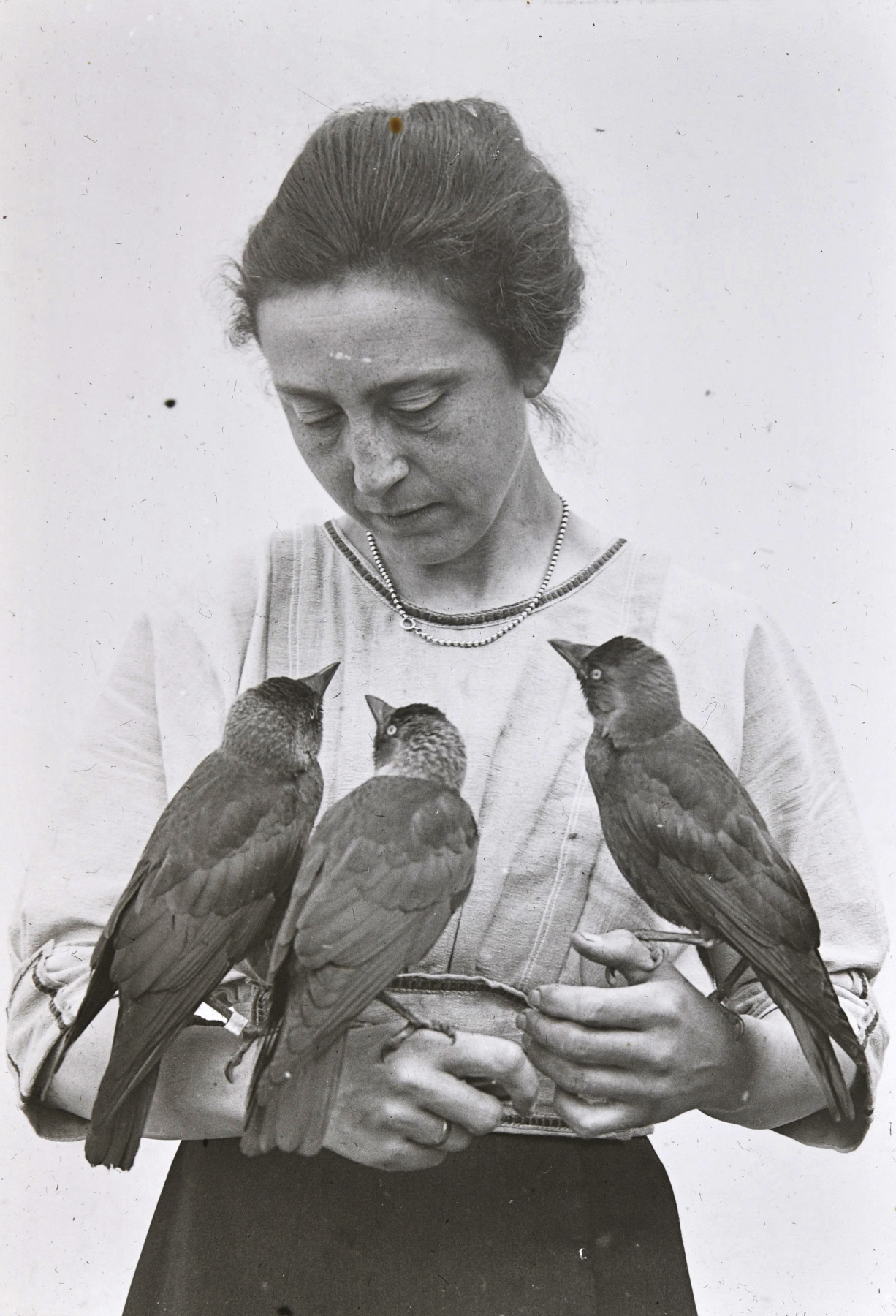
Magdalena Heinroth with three jackdaws she raised in her apartment, 1919. (AZGB, image: O. Heinroth. All rights reserved.)
Magdalena Heinroth (née Wiebe, 1883–1932) raised hundreds of native birds in the apartment she shared with her husband Oskar Heinroth at the Berlin Aquarium. These included the three jackdaws pictured here perched on her arms. An image of her husband  Oskar Heinroth, taken some ten years later, shows him in the same pose with three Ural owls. Throughout the 1920s, the couple gathered observations on the development of virtually all European birds, from hatching, through molting, and into adulthood. Their findings provided the basis for the four-volume standard reference work they wrote together, Die Vögel Mitteleuropas: In allen Lebens- und Entwicklungsstufen photographisch aufgenommen und in ihrem Seelenleben bei der Aufzucht vom Ei ab beobachtet, 1924-1934. The living arrangements of the two scientists could be described as being akin to a ‘bird flat-share’.1
Oskar Heinroth, taken some ten years later, shows him in the same pose with three Ural owls. Throughout the 1920s, the couple gathered observations on the development of virtually all European birds, from hatching, through molting, and into adulthood. Their findings provided the basis for the four-volume standard reference work they wrote together, Die Vögel Mitteleuropas: In allen Lebens- und Entwicklungsstufen photographisch aufgenommen und in ihrem Seelenleben bei der Aufzucht vom Ei ab beobachtet, 1924-1934. The living arrangements of the two scientists could be described as being akin to a ‘bird flat-share’.1
Magdalena Wiebe studied  taxidermy, among other subjects, at the Natural History Museum in Berlin. It was also there that she met her future husband. Until her untimely death in 1932, she conducted research on birds, their molting, and breeding. Mostly self-taught, Magdalena Heinroth wrote numerous articles on these subjects. Her work appeared in various publications, including the world’s oldest ornithological journal Die gefiederte Welt. To the public, however, she is known above all as her husband’s most important collaborator, even though her own
taxidermy, among other subjects, at the Natural History Museum in Berlin. It was also there that she met her future husband. Until her untimely death in 1932, she conducted research on birds, their molting, and breeding. Mostly self-taught, Magdalena Heinroth wrote numerous articles on these subjects. Her work appeared in various publications, including the world’s oldest ornithological journal Die gefiederte Welt. To the public, however, she is known above all as her husband’s most important collaborator, even though her own  work remains important to this day.
work remains important to this day.
- Karl Schulze-Hagen. Die Vogel-WG: Die Heinroths, ihre 1000 Vögel und die Anfänge der Verhaltensforschung. München: Knesebeck, 2020. On the work itself, cf. Karl Schulze-Hagen. “Das ‘Handbuch der Vögel Mitteleuropas’: Sein Stellenwert gestern, heute, morgen”. Der Ornithologische Beobachter 110, Nr. 3 (2013): 231-248.↩